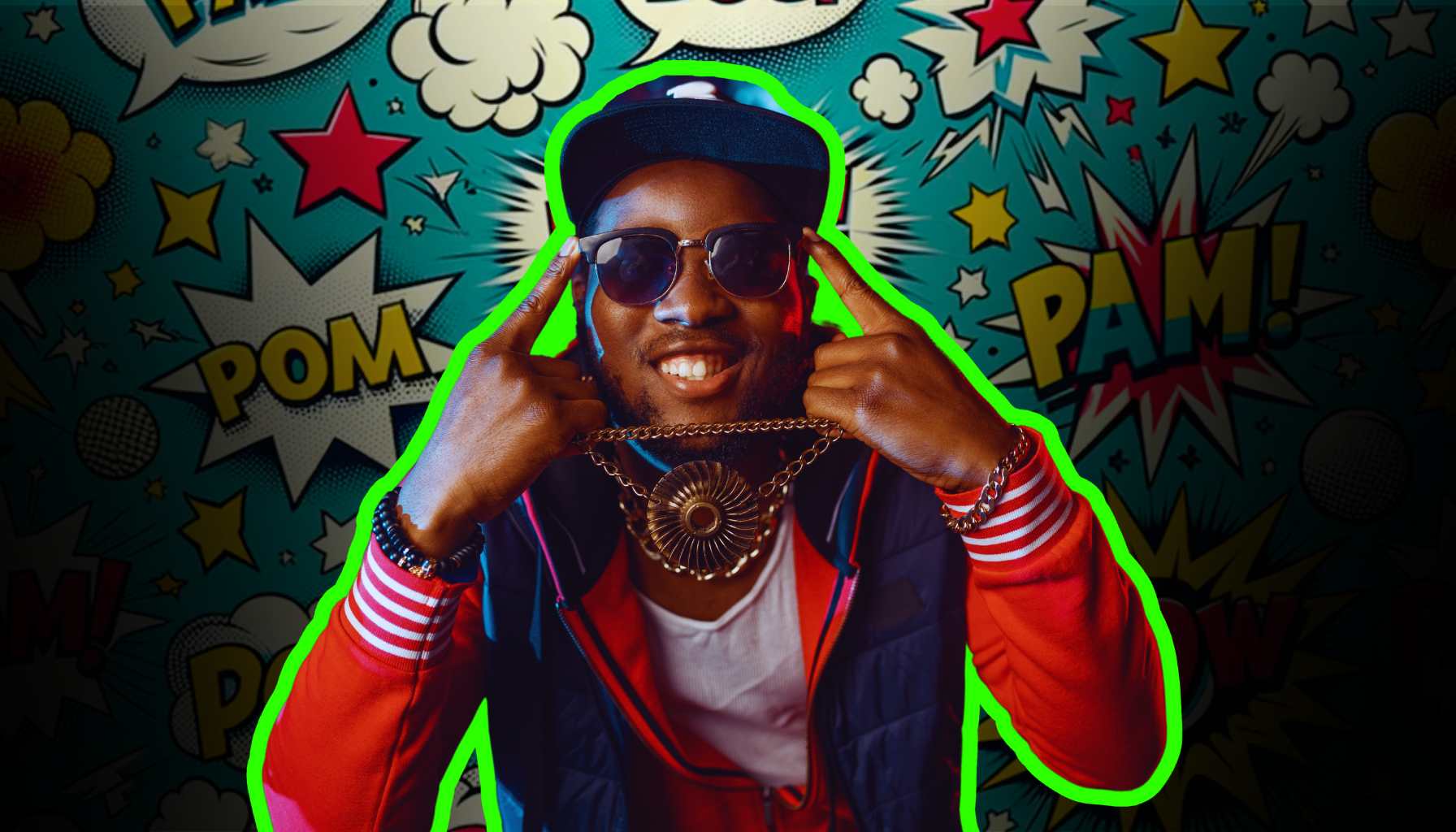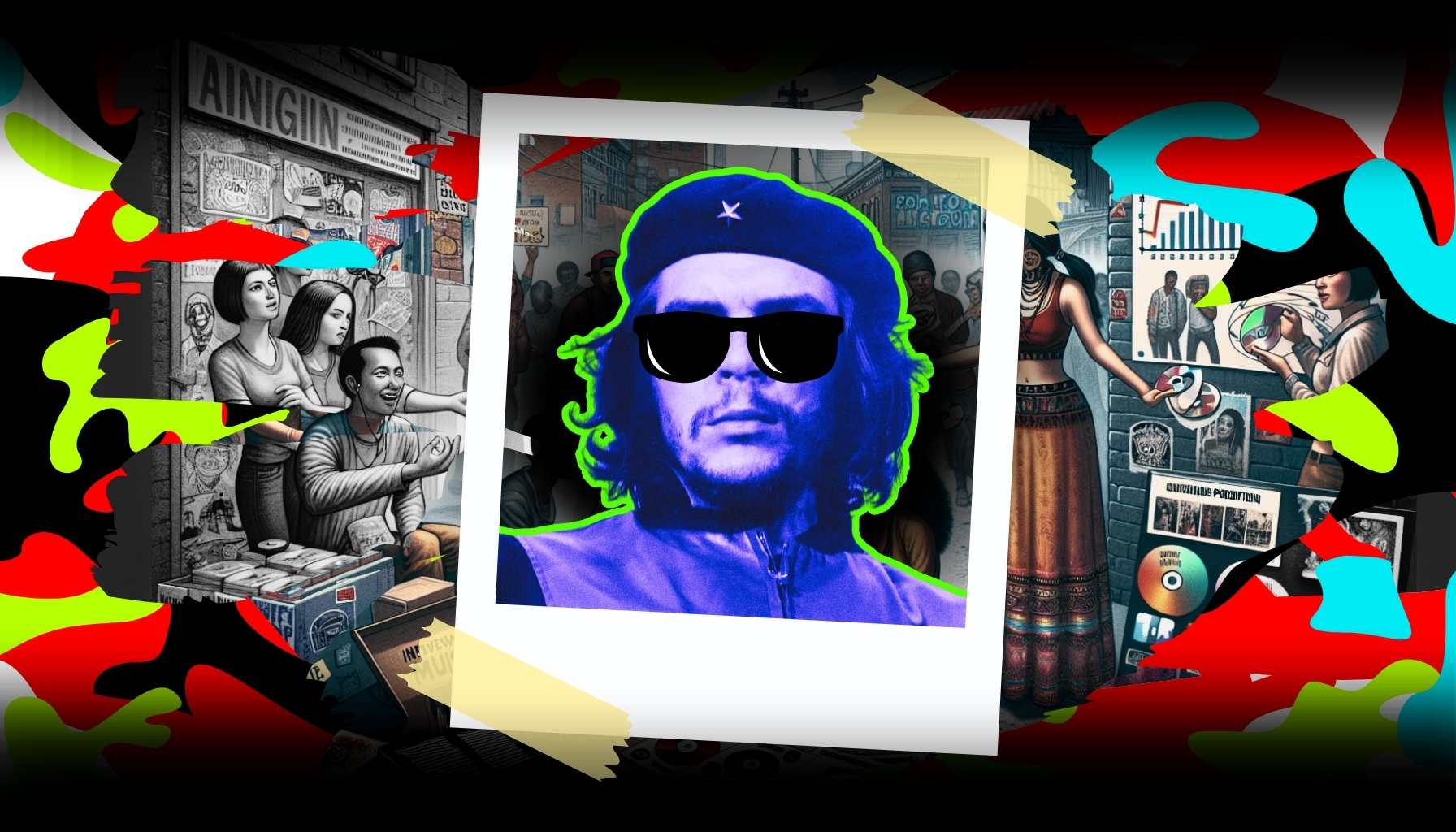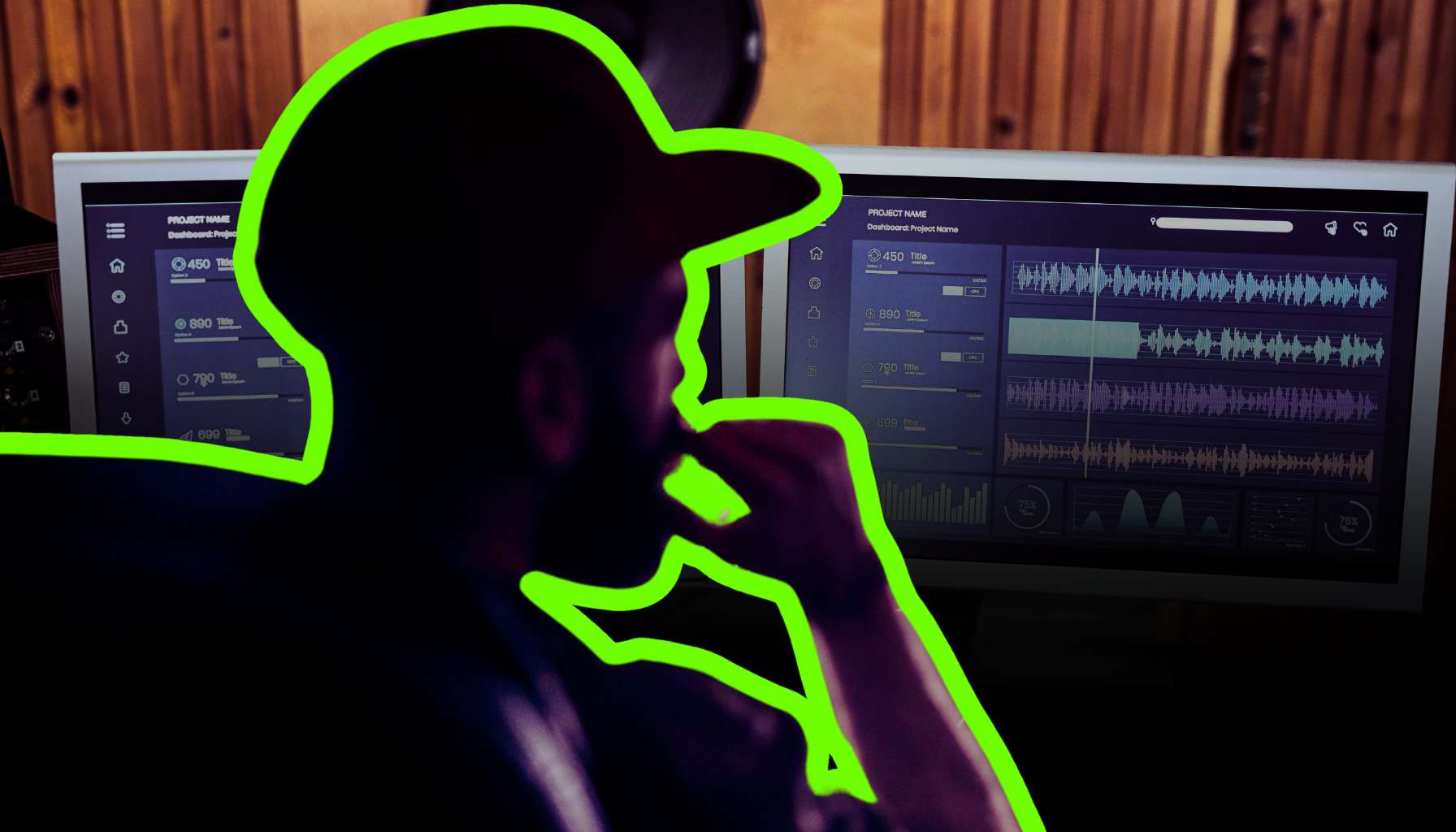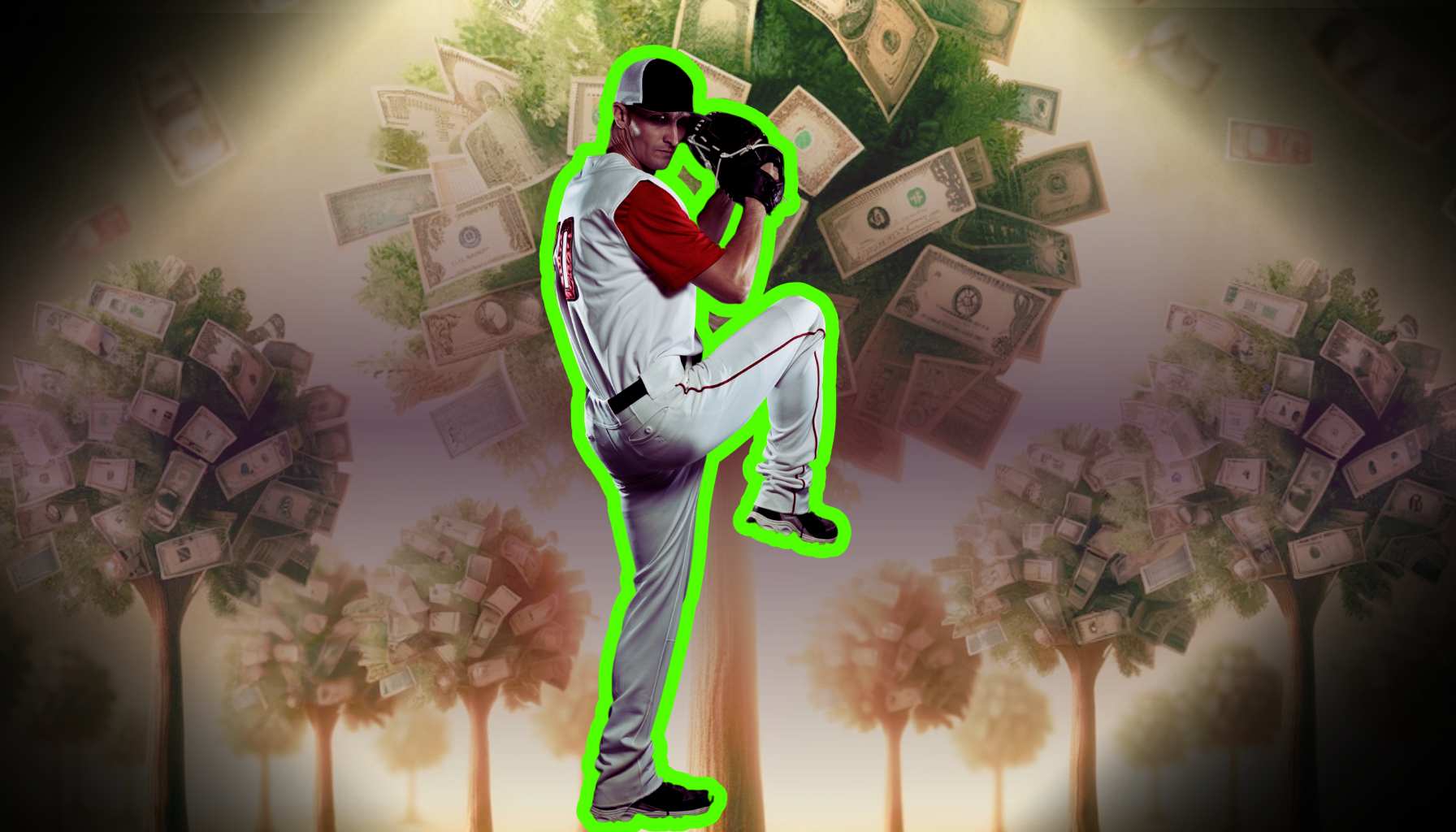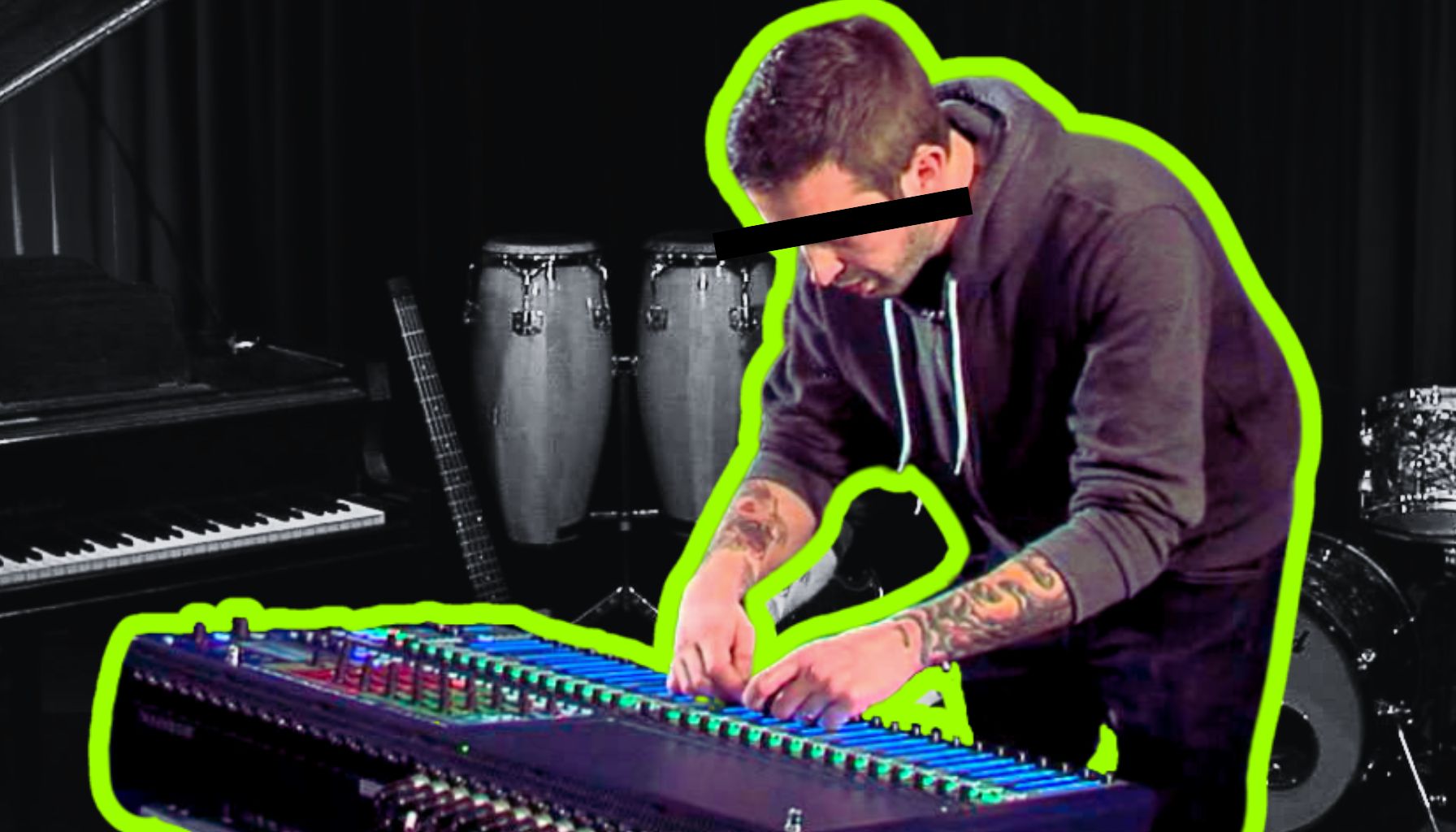
I. Introduction: Merchandising as a Music Artist Revenue Stream
Let’s face it, the days when artists could live off album sales alone are as dated as floppy disks. In the modern tune trade, merchandising is the unsung hero of a musician’s income, harmonizing sweetly with streams and live gigs.
So, what’s the big deal about slapping your name on a t-shirt or a vinyl figure, you ask? Buckle up, buttercup, because we’re about to dive deep into the world of merch and why it’s a game-changer for artists looking to amp up their revenue.
A. Importance of Diversifying Income Through Merchandise
First off, let’s talk diversification. Think of your income streams like a rock band; you wouldn’t want just one member carrying the whole show, right? Merchandise is the bassist that brings the groove to your financial portfolio.
It’s a tangible way for fans to connect with your brand, and let’s be honest, who doesn’t love a band tee? But it’s more than just apparel; it’s about creating a range of products that resonates with your audience and keeps the cash flowing, even when you’re not on stage or in the studio.
B. Connection Between Brand Identity and Merchandising
Now, let’s riff on brand identity. Merch isn’t just about slapping your logo on a mug; it’s a chance to showcase who you are as an artist. It’s the visual vibe of your sound, the iconography of your lyrics, and the ethos of your music, all wrapped up in products that fans can’t wait to get their hands on.
When done right, merch can be a powerful expression of your brand that speaks volumes without making a sound. As we segue into defining your brand and audience, remember, the key is to hit the right notes that resonate with your fanbase.
It’s about understanding who’s tuning in and why they’re cranking up the volume on your tracks. Stay tuned, because in the next section, we’ll break down how to identify your visual aesthetic, understand your musical identity, and align your products with the interests of your fans. And trust me, when you get this chord progression right, you’ll be orchestrating a symphony of sales that’ll make your merch table the hottest ticket in town.
II. Defining Your Brand and Audience
Before you even think about what kind of swanky merch you want to sell, let’s hit the brakes and tune into two critical concepts: your brand and your audience. These aren’t just buzzwords to throw around like confetti at a New Year’s bash—they’re the bedrock of your merchandising strategy. After all, you wouldn’t want to be the artist who prints a thousand glow-in-the-dark hoodies only to find out your fans prefer bandanas and bucket hats, right?
A. Establishing a Unique Artist Brand
1. Identifying Your Visual Aesthetic
First, crank up the volume on your visual aesthetic. This is the look and feel that fans associate with your music. It’s the album artwork, the Instagram filters, the fonts on your website—all painting a picture of your artistic soul. Ask yourself, what colors, patterns, and designs can fans see with their eyes closed and immediately think, “Yep, that’s so [insert your artist name here]?”
2. Understanding Your Musical Identity
Now, let’s riff on your musical identity. It’s the heartbeat of your brand, pulsing through every lyric and chord progression. Are you a rebel with a cause, a poet of the streets, or a balladeer of broken hearts? Nail down what makes your music tick, and you’ll have a compass for crafting merch that’s more ‘you’ than your own signature.
B. Knowing Your Audience
1. Analyzing Demographics
Got your brand dialed in? Sweet. Now let’s talk about those who rock out to your tunes—your audience. Whip out your magnifying glass and start analyzing demographics. Age, location, lifestyle—it’s all part of the mixtape that makes up your fanbase. Understanding who they are helps you create merch they’ll actually want to wear, use, or display.
2. Aligning Products with Fan Interests
Next, ensure your merch lineup jives with your fans’ interests. If your fans are eco-conscious, consider sustainable merch options. If they’re tech-heads, maybe branded USB drives loaded with your latest EP will have them geeking out. The point is, your merch should be as in tune with your fans as your music is.
3. Engaging with Fans for Insights
Don’t guess—ask! Social media polls, fan club surveys, and good ol’ face-to-face chitchat at gigs can reveal what your fans are craving. Engaging with your audience not only fuels your merch ideas but also strengthens the bond with your fans. It’s a win-win, like hitting a high note in a power ballad.
Whether it’s setting clear goals, choosing your merch mix, or considering production costs, these insights will guide you toward a merch table that’s as hit-worthy as your music. Stick around, because in the next section, we’re turning up the amp on planning your killer merch lineup—no filler, all killer.
III. Planning Your Merchandise Line
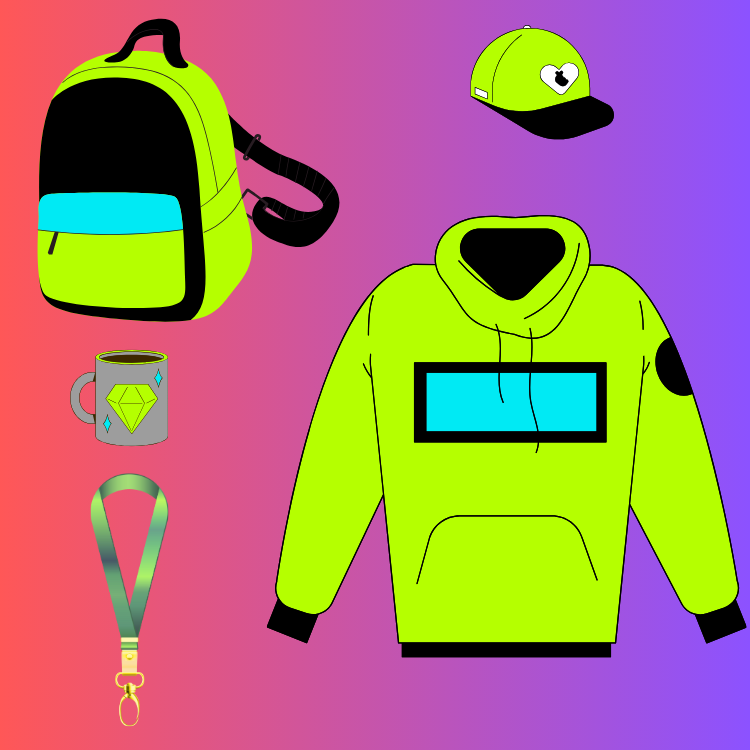
You’ve tuned into your brand’s rhythm and gotten cozy with your fanbase’s beat. Now it’s time to crank out a merchandise line that’ll have your audience headbanging in approval. But before you start printing those bandanas and bucket hats, let’s map out the roadie-approved plan for merch that hits the right note without missing a beat.
A. Setting Clear Goals and Objectives
1. Defining the Purpose of Your Merch Line
Start by asking yourself the million-dollar question: What’s the purpose of my merch line? Sure, making a quick buck is great, but your merch can also be a billboard for your brand, a collector’s item, or a ticket to an unforgettable fan experience. Get clear on your goals, and you’ll avoid the dreaded merch graveyard (we all know that band with a garage full of unsold CDs).
2. Creating Measurable Targets
Now, let’s get down to brass tacks with some measurable targets. How much do you want to earn? What’s the number of units you’re aiming to sell? Setting specific targets isn’t just about keeping score; it’s about giving you a clear aim for your merch slingshot. And remember, “If you can’t measure it, you can’t manage it.”
B. Selecting Your Merchandise Mix
1. Core Merchandise Options (Apparel, Accessories, etc.)
When it comes to your merch mix, think of it as your setlist – you need the crowd-pleasers. Apparel and accessories are the classics; they’re your ‘Free Bird’ and ‘Stairway to Heaven.’ They’re what fans expect and love to throw their money at. Make sure these core items truly represent your brand’s look and feel.
2. Specialty Items and Limited Editions
But hey, why not spice it up with some specialty items and limited editions? These are your solos, the unexpected riffs that get fans talking. Think limited-run vinyl, signed posters, or even a line of hot sauce if that’s your jam. These items can create a buzz and become a hot commodity among your fanbase.
3. Experiential Merchandise (Meet & Greets, VIP Packages)
And don’t forget the experiential merchandise, like meet & greets or VIP packages. These are your encores – the moments fans will remember forever. Offering experiences can deepen the connection with your audience and turn casual listeners into hardcore fans.
C. Considering Production and Costs
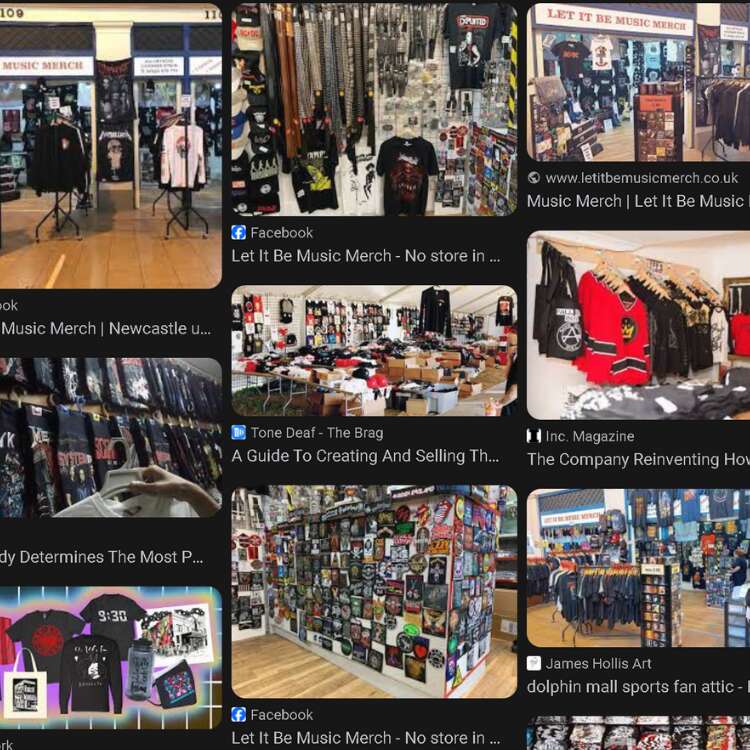
1. Budgeting and Pricing Strategies
Now, let’s talk turkey—budgeting and pricing. Your merch should be making you money, not giving you a heartache. Work out the costs of production, set your prices at a point that’s fair to both you and your fans, and keep an eye on that bottom line.
2. Quality Control and Vendor Selection
Quality control and vendor selection are as crucial as the encore of your biggest hit. Partner with reputable manufacturers to ensure your merch doesn’t fall apart faster than a one-hit-wonder’s career. High-quality merch reflects well on you and keeps fans coming back for more.
3. Inventory Management
Lastly, inventory management – the backstage hero. Keep track of what’s selling like hotcakes and what’s not moving. You don’t want to end up like the drummer who forgot his sticks – unprepared and with a whole lot of nothing.
As we slide our pick to the next track, designing merchandise that resonates, remember that planning is your roadmap to merch success. With a solid plan, your merch will not only look and feel great but also turn your brand into a living, breathing experience for your fans. So, stick around, because in the next section, we’re putting the ‘art’ in ‘merch’ and making sure your products sing in perfect harmony with your music.
IV. Designing Merchandise That Resonates
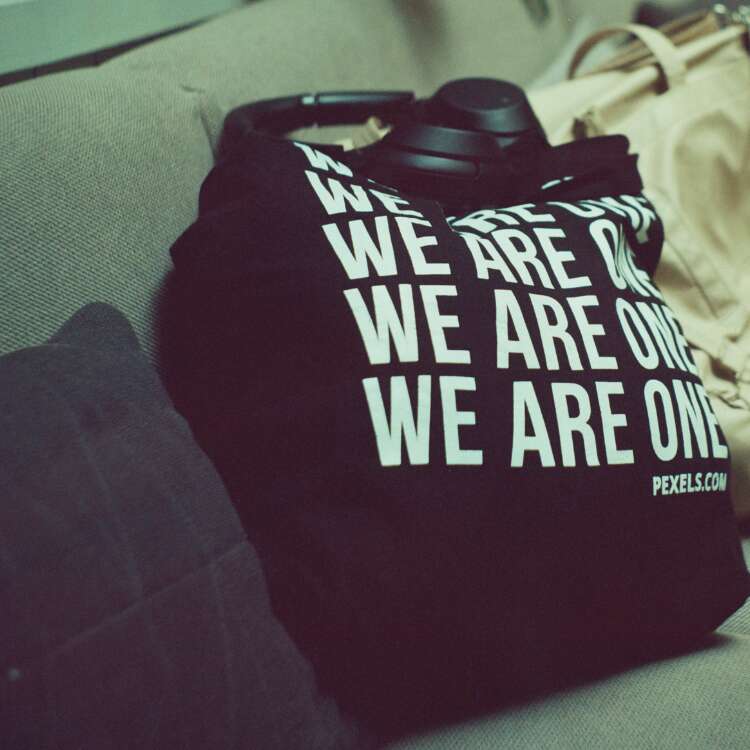
You’ve set the stage with a killer plan for your merchandise line, and now it’s time for the main act: designing merch that’s as catchy as your chorus hooks. Let’s face it, nobody wants merch that’s as forgettable as a one-hit-wonder’s second single. You want your fans to sport your gear with the same pride as a roadie wears their backstage pass.
A. Merging Art with Product
1. Capturing the Essence of Your Music
Designing merchandise is like writing a hit song; it has to capture the essence of your music and echo the soul of your brand. Whether it’s the rebellious streak of your guitar riffs or the raw emotion of your ballads, your merch should be a visual encore of what you stand for. Think of each product as a piece of your art gallery, with fans eager to take home a masterpiece.
2. Collaborating with Designers or Using DIY Design Tools
Now, unless you’re a secret Picasso, you might want to collaborate with designers who can translate your sound into visuals that pop. But if your budget’s tighter than skinny jeans on a drummer, don’t fret—DIY design tools like Canva have got your back. They’re user-friendly and can help you create professional-looking designs without selling your prized guitar for graphic design funds.
B. Customizing Merchandise
1. Involving Fans in the Design Process
Get your fans involved in the design process—it’s like crowd-surfing; you’re literally being supported by your audience. Run design contests, ask for feedback on social media, or even set up voting polls. It’s a fantastic way to ensure your merch will be a hit before it even drops, and it makes your fans feel like they’re part of the band (minus the tour bus life).
2. Personalized and Autographed Items
Let’s not forget the power of personalized and autographed items. Adding that personal touch is like the secret chord that pleases the ear—it makes fans feel special. Whether it’s a signed vinyl or a t-shirt with their name on it, personalized merch can turn a casual listener into a superfan faster than you can say “encore.” As we prep for the next gig on this merch tour, manufacturing and supplier relations, remember that your designs are the headliners of your merch line. They’re what will make fans line up at the merch booth, ready to throw their hard-earned cash at you. With designs that truly resonate, you’re not just selling products; you’re selling pieces of your musical journey. So tune your design strings and get ready, because up next, we’re diving into the nitty-gritty of bringing your merch from concept to reality, without hitting a sour note.
V. Manufacturing and Supplier Relations
After your merch designs have hit the high note, it’s time to bring them down to earth—or rather, into the hands of your adoring fans. But hold your stage dive! Before the crowd can catch you, you need a reliable crew to set up the show, and in the merch world, that means choosing the right manufacturing partners and establishing solid supplier relations. It’s the unglamorous grunt work that makes the dream work.
A. Choosing the Right Manufacturing Partners
1. Assessing Manufacturer Capabilities and Reputation
It’s like forming a band—you want members who can play their instruments and show up to practice. When scouting for manufacturers, research their capabilities and reputation. Can they handle your specific product needs? Are they more than a one-hit-wonder with a history of satisfied clients? Remember, the quality of your merch reflects directly on you, so choose a partner that hits all the right notes.
2. Negotiating Terms and Lead Times
Once you’ve found a manufacturer that’s music to your ears, it’s time to talk terms and lead times. This is the part where you fine-tune the contract until it sings. Clear communication about timelines, costs, and delivery expectations will save you from a cacophony of logistical nightmares down the road.
B. Sustainable Practices in Merch Production
1. Eco-friendly Materials and Processes
Now, let’s face it, nobody wants their merch to be a one-way ticket to an environmental breakdown. In an age where fans are as conscious about the planet as they are about playlists, opting for eco-friendly materials and processes isn’t just nice—it’s necessary. Whether it’s organic cotton t-shirts or biodegradable packaging, green practices can make your merch stand out in a sea of synthetics.
2. Ethical Considerations in Manufacturing
But it’s not just about what your merch is made of—it’s also about who makes it. Ethical considerations in manufacturing are the chorus to your brand’s song. Ensure your merchandise is produced under fair labor conditions. Fans respect artists who walk the talk, and ethically produced merch can strike a powerful chord with them.
As you get ready to rock the next stage of your merch journey, selling your merchandise, remember that manufacturing and supplier relations are the unsung heroes of the merch world.
They’re the bassists and drummers—often overlooked, but without them, there’s no show. So, set the stage right with partners who share your vision and ethics, and you’ll have fans cheering for an encore. Up next, we’ll plug into the amp of e-commerce and live event sales, because what’s the point of all this if you can’t get your merch into the mosh pit of the market?
VI. Selling Your Merchandise
With your merchandise now ready to hit the stage, it’s showtime for sales. But, selling your merch isn’t just about setting up a stand at gigs or slapping products on a webpage; it’s about creating a stage presence in the digital marketplace and at live events that’s as unforgettable as your live performances.
A. Building an Online Presence
1. Developing an E-commerce Platform
First, you’ll want to build a virtual merch table, also known as an e-commerce platform. This isn’t just a corner of the internet; it’s the digital representation of your merch table. It’s where fans go to support you 24/7, so make it as inviting as the VIP area at a festival. User-friendly design, secure payment options, and clear product listings are your VIP passes to winning sales online.
2. Leveraging Social Media for Sales
Next up, leveraging social media for sales. These platforms aren’t just for posting selfies or what you had for breakfast. They’re powerful tools to create buzz around your merch. Use them to showcase your products in action, share testimonials from fans, and drop exclusive deals. It’s like the encore at the end of your gig – it keeps the crowd wanting more.
B. Merchandise Sales at Live Events
1. Event Merchandising Strategies
When it comes to live events, your merch table is where the magic happens. It’s more than just a place to sell shirts; it’s an extension of the concert experience. Develop event merchandising strategies that make buying as much a part of the show as the encore. Exclusive event-specific merch can turn a memento into a must-have.
2. Managing Logistics and Inventory on Tour
And let’s not forget about managing logistics and inventory on tour. It’s the roadie of your merch operation – unseen but essential. Track your bestsellers, keep your stock levels in tune, and always be ready for the rush of fans post-show. It’s like having the perfect setlist – you know what the crowd wants and when they want it.
C. Distribution Channels
1. Online Marketplaces and Physical Retail
Beyond your own channels, consider online marketplaces and physical retail. It’s like getting your music on every radio station – the more places your fans can find your merch, the better. Just ensure you’re not compromising your brand’s integrity for the sake of presence; your merch should always feel like a VIP backstage pass, not a free-for-all.
2. Partnerships for Broader Distribution
And then, there’s the power of partnerships for broader distribution. Team up with retailers who get your brand and can amplify your reach. It’s like the opening act that introduces you to a new audience – a strategic partnership can do the same for your merch.
As we tune up for the next part of our journey, marketing your merch line, keep in mind that selling your merchandise is about more than transactions; it’s about creating an experience that resonates with your fans.
With a strategy that’s in harmony with your brand and music, you’ll not only see sales soar but also strengthen the connection with your audience. Up next, we’ll dive into the art of hyping your merch line, because what’s rock without a little roll?
VII. Marketing Your Merch Line
So, you’ve got a truckload of killer merch and a sales strategy smoother than your slickest guitar solo. But how do you get the word out? How do you ensure your merch doesn’t sit in the wings but takes center stage in the spotlight where it belongs? It’s time for some good old-fashioned marketing – with a modern twist.
A. Crafting a Launch Plan
1. Timing Releases with Music Projects or Tours
Like dropping a new album or single, timing is everything. Coordinate your merch releases with music projects, tours, or significant events. This synchronicity not only makes marketing sense but it also creates a narrative that fans can follow. It’s storytelling through commerce, and who doesn’t love a story that ends with a cool new tee or a limited-edition vinyl?
2. Promotional Campaigns and Teasers
Then, tease them a little – not too much, just enough to get the buzz going. Use promotional campaigns, sneak peeks, and teasers to stir up excitement. Create an aura of anticipation around your merch just like you would before the curtain rises on a sold-out show.
B. Engaging Fans and Building Hype
1. Social Media Marketing
Social media marketing is your frontman when it comes to engaging fans. It’s immediate, it’s personal, and it’s where your fans are at. Showcase your merch in action, share behind-the-scenes glimpses of your design process, and create content that fans can interact with. Think of it as an online fan meet-up where everyone’s wearing your band’s tee.
2. Collaborations and Influencer Partnerships
Don’t underestimate the power of collaborations and influencer partnerships. Aligning with the right people can amplify your reach like a stack of Marshall amps. Influencers who resonate with your music and brand can introduce your merch to a broader audience, making your brand echo through the vast halls of social media.
3. Exclusive Offers and Fan Club Specials
Lastly, don’t forget to reward your loyal fans with exclusive offers and fan club specials. They’re your groupies, your die-hards, the ones who would wear your band’s logo as a tattoo if they could. Give them the VIP treatment with early access or special bundles. It’s like the secret track at the end of an album; it’s there for those who are truly tuned in.
As we set the stage for the next act, handling logistics, from order to delivery, remember that marketing isn’t just about selling; it’s about telling the world who you are through your merch. It’s about creating a connection that turns casual listeners into lifelong fans.
And as you’ll see in the next section, getting your merch into their hands is just as important as getting it into their heads. Stay tuned, because this show is far from over.
VIII. Handling Logistics: From Order to Delivery
You’ve wooed your audience with your tunes, dazzled them with your merch, and now they’re hitting the ‘buy’ button faster than a drum solo in a metal anthem. But wait, the show’s not over yet! The encore is ensuring that your merch reaches your fans’ hands without missing a beat. That’s right, we’re talking logistics, the backbone of any merchandising operation.
A. Streamlining Order Fulfillment
1. E-commerce Logistics and Customer Service
Streamlining order fulfillment is like conducting an orchestra; every section must be in harmony. From the moment a fan clicks ‘purchase,’ to the unboxing experience, the process should be smooth as a love ballad. It’s not just about shipping a box; it’s about delivering an experience. And don’t skimp on customer service – it’s the voice of your brand when you’re not there to sing.
2. Handling Returns and Exchanges
And what about the off-chance someone hits a sour note with their order? Handling returns and exchanges with grace can turn a one-hit-wonder fan into a loyal follower. Make it easy, make it fast, and keep your fans in the loop. They’ll appreciate the VIP treatment and stick around for your next chart-topper.
B. Shipping and Handling Techniques
1. International vs. Domestic Shipping Strategies
Now let’s talk shipping strategies. Whether your merch is touring internationally or serenading local fans, your shipping game needs to be as tight as your rhythm section. It’s about balancing cost with speed, reliability with reach. Navigating customs and tariffs can be as tricky as a guitar riff in a prog rock song, but with the right approach, you’ll have your merch crossing borders like a world tour.
2. Keeping Costs Low for the Consumer
And in the spirit of keeping your fans front row and center, keeping costs low for the consumer is like an encore they didn’t expect. Work out deals with carriers, consider warehousing options, and always look for ways to trim the fat without cutting quality. After all, your fans’ cheers are louder when they feel they’ve scored a deal.
As we gear up for the final curtain call and reflect on the journey of building a merch line, remember that the logistics of getting your product from A to B is the unsung hero of the music merch world. It’s the roadie that doesn’t get the applause but deserves a standing ovation.
In the next section, we’ll wrap up with some key takeaways, ensuring that your venture into merchandising hits the high notes and avoids the pitfalls. So, don’t pack up your gear just yet; we’ve got one more set to play.
IX. Conclusion: Reflecting on the Journey of Building a Merch Line
And there you have it, the final chord in our symphony of merchandising mastery. You’ve toured through the ins and outs of turning your brand into a tangible treasure trove for fans. But before you take your bow and exit stage left, let’s reflect on this wild ride and how it crescendos into a sustainable future for your music biz hustle.
A. The Importance of Iteration and Feedback
Just like tweaking a track in the studio until it’s just right, your merch line is a living, breathing entity that thrives on iteration and feedback. It’s about listening to the crowd, reading the room, and adjusting the setlist accordingly.
Whether it’s a tweak to your designs based on fan input or a complete overhaul of your shipping strategy, staying nimble is key. Remember, even The Beatles didn’t stick with the same haircut forever.
Gathering feedback isn’t just about basking in the glow of praise or wincing at the occasional sour note. It’s about engaging with your audience in a dialogue that shapes the future of your merchandise line. Surveys, social media polls, and direct customer service interactions are your mics to the masses. Use them wisely.
B. Envisioning Long-term Growth in Merchandising
Looking beyond the now, envisioning long-term growth in merchandising means planting seeds today that will grow into a forest of fan-favorite gear tomorrow. It’s about more than slapping your latest album cover on a t-shirt; it’s about creating a legacy of products that resonate with your evolving brand and fan base.
As you map out the future, consider the trends but don’t be a slave to them. Like a timeless classic hit, your merch should capture the essence of your artistry while staying relevant. Explore new product lines, dip your toes into sustainable merchandise, or even consider digital collectibles if that’s where the beat takes you.
As we prepare to drop the mic on this guide, remember that building a merch line is much like building a career in music. It requires passion, dedication, and a willingness to take risks. The spotlight’s on you, so own that stage.






